

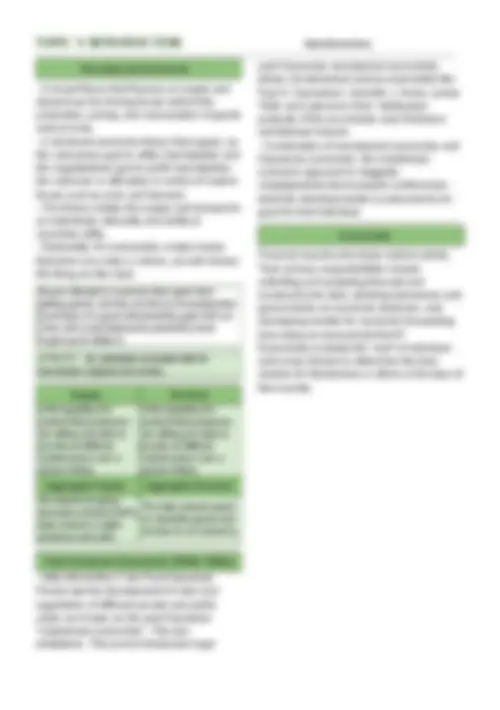
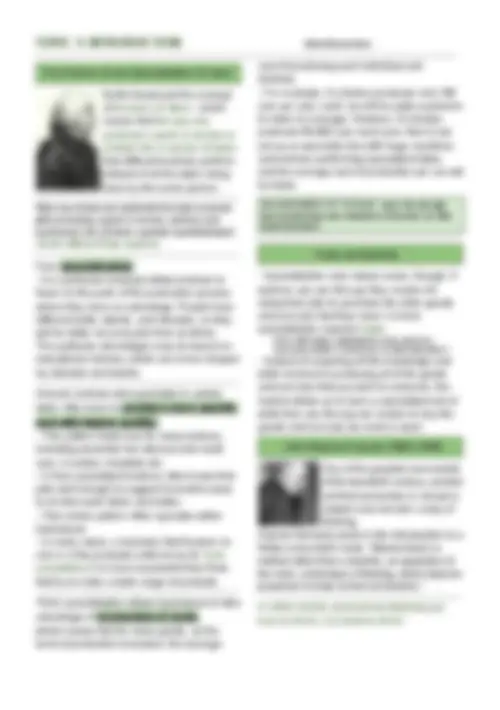
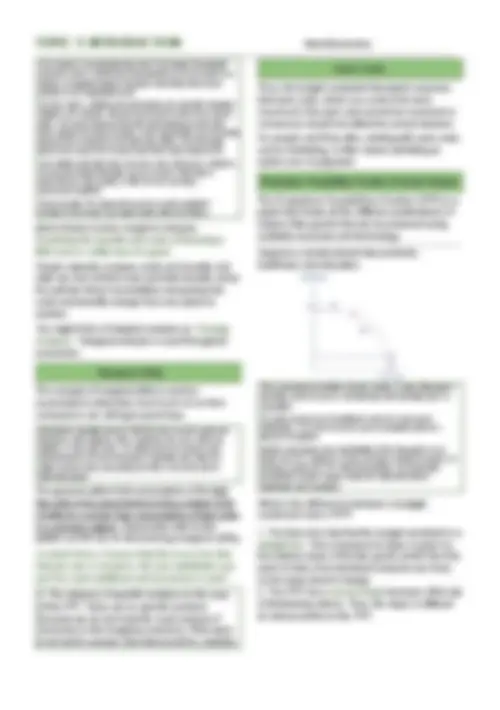
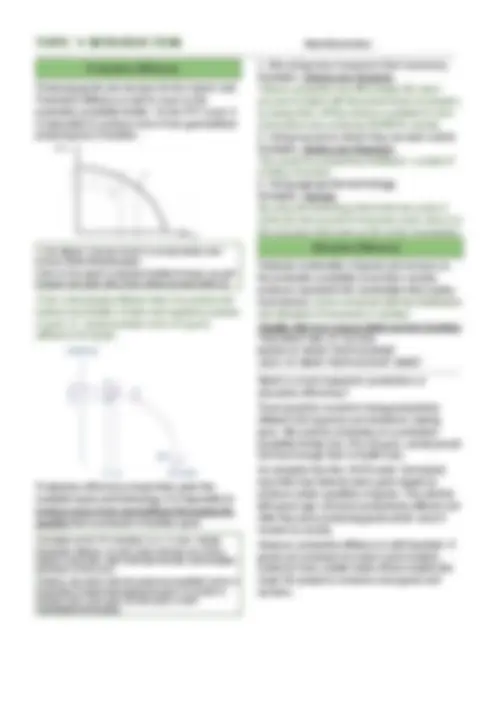
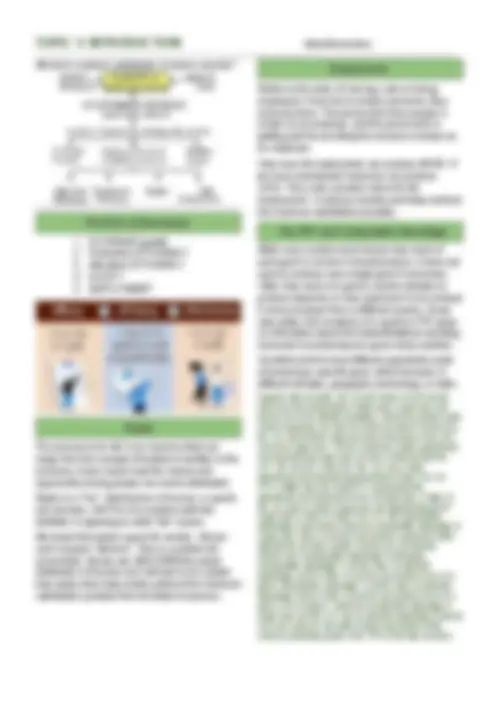
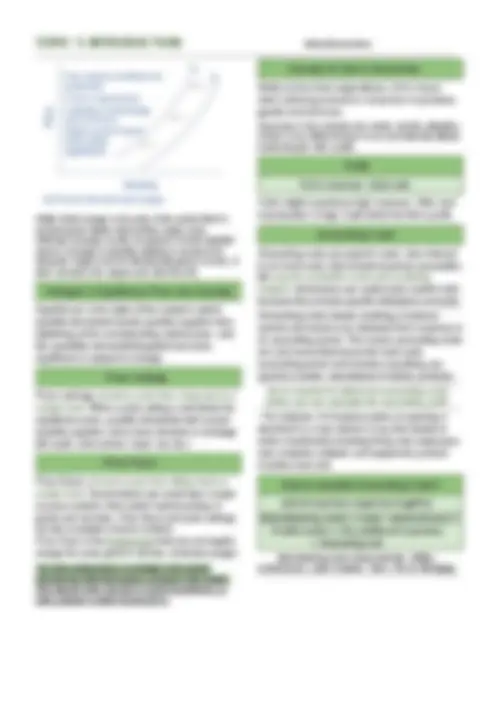
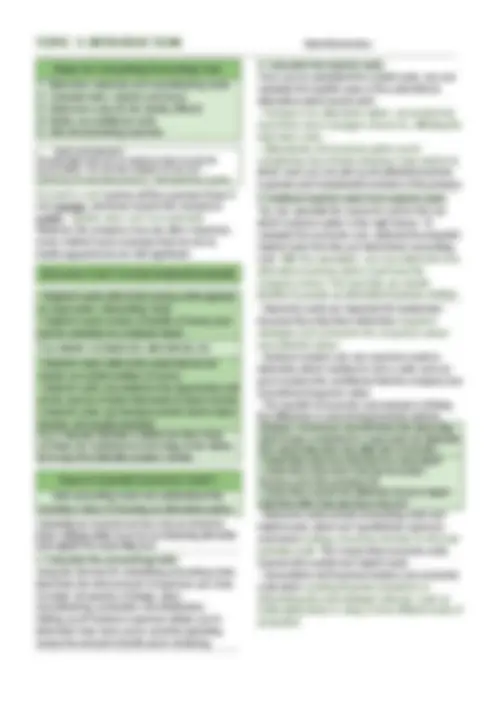
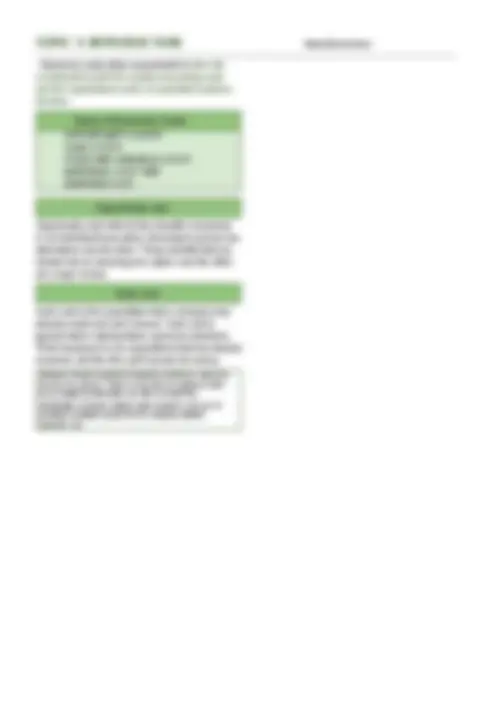
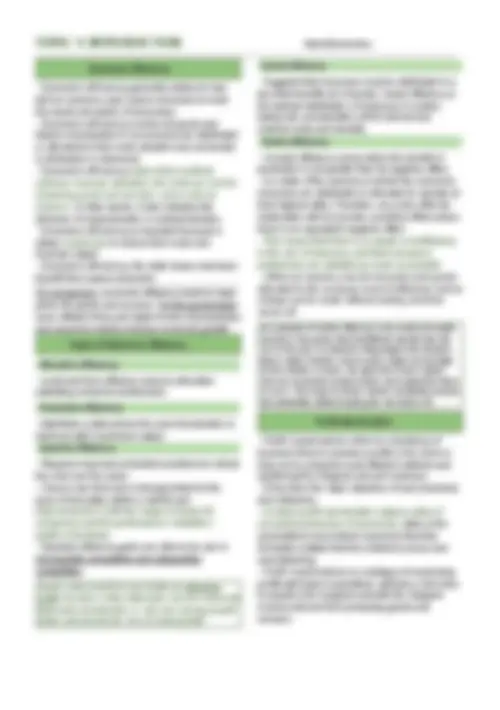
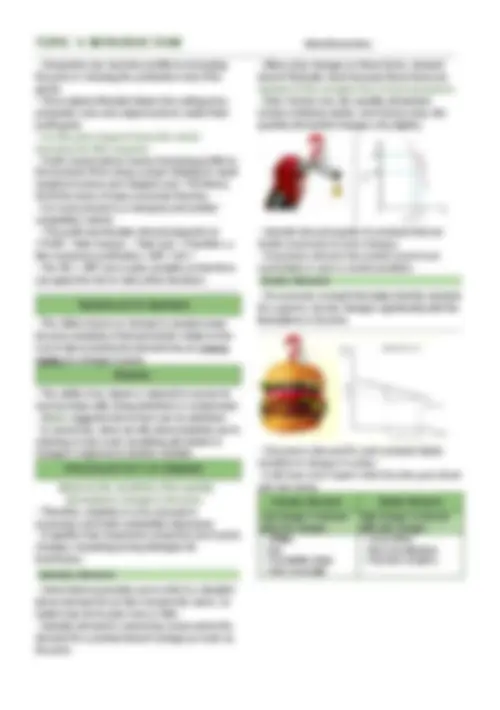
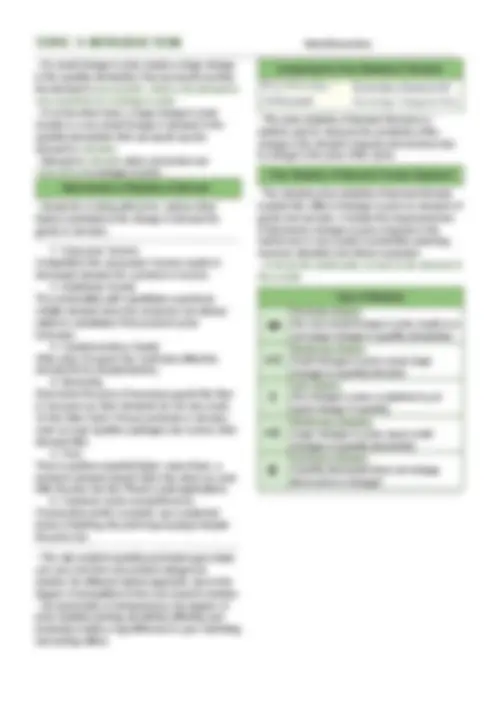
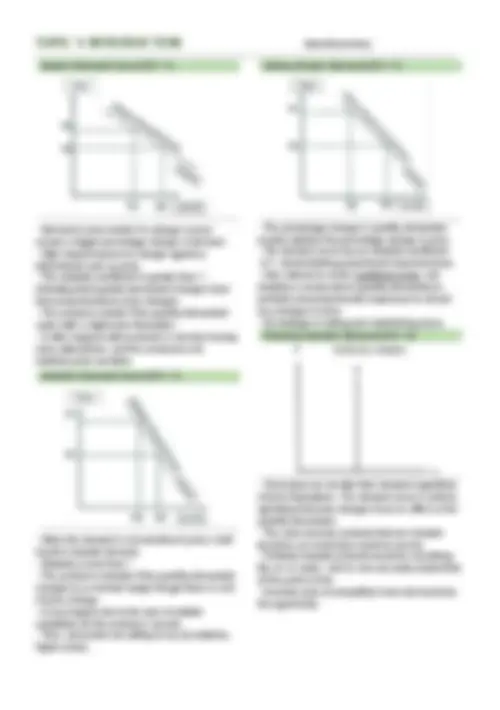
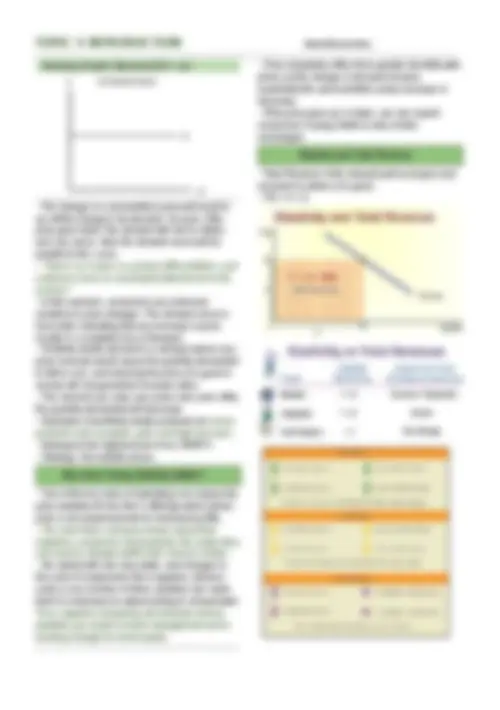
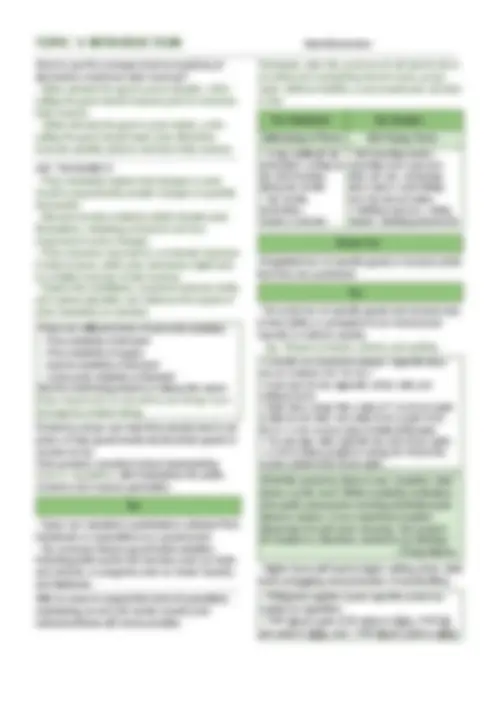
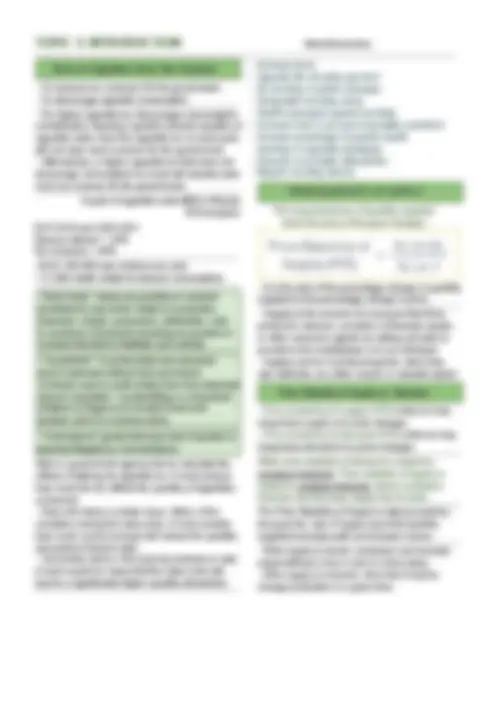
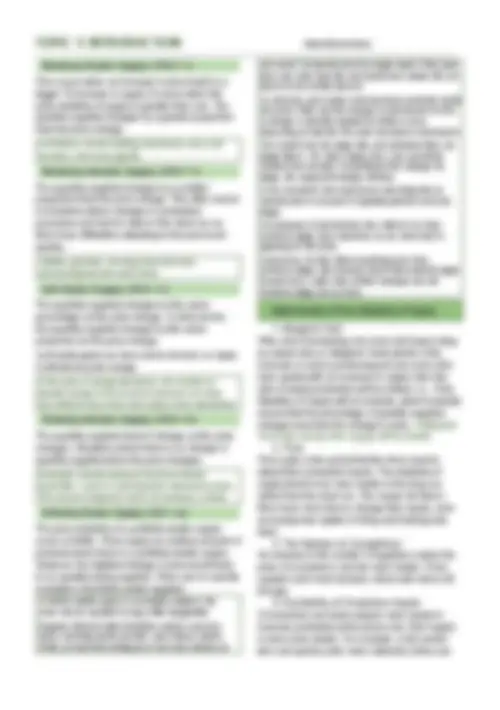
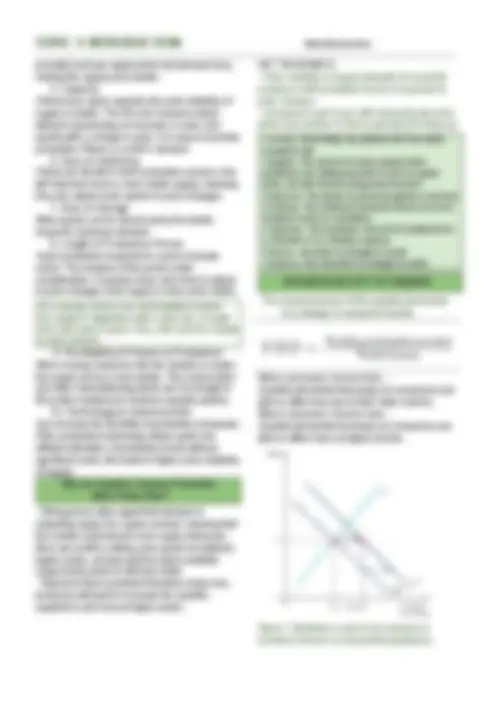
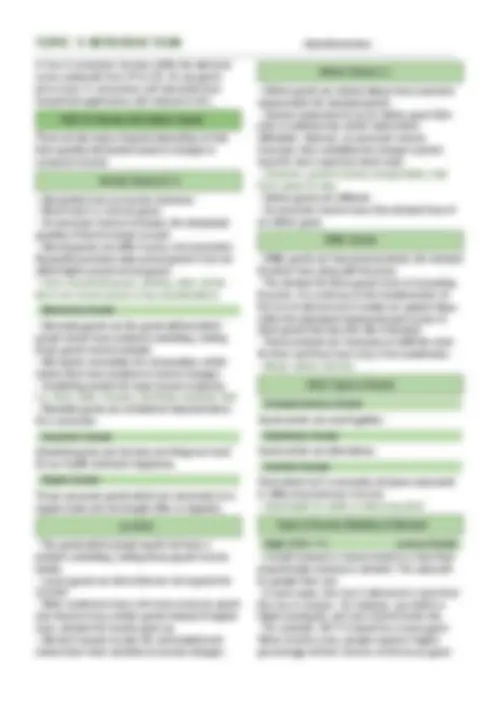
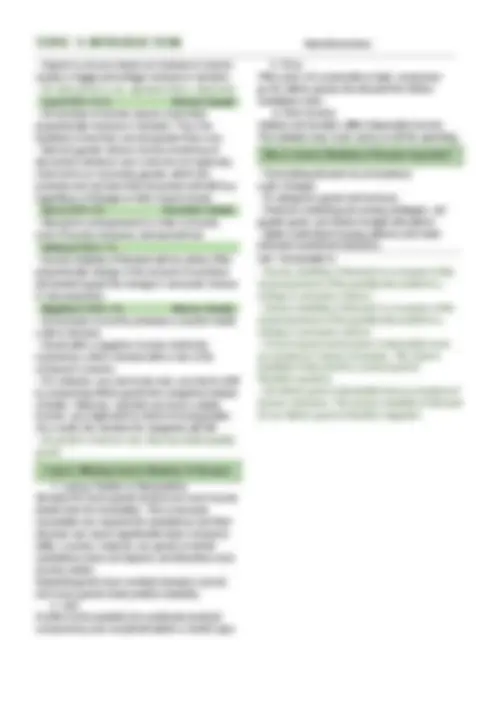
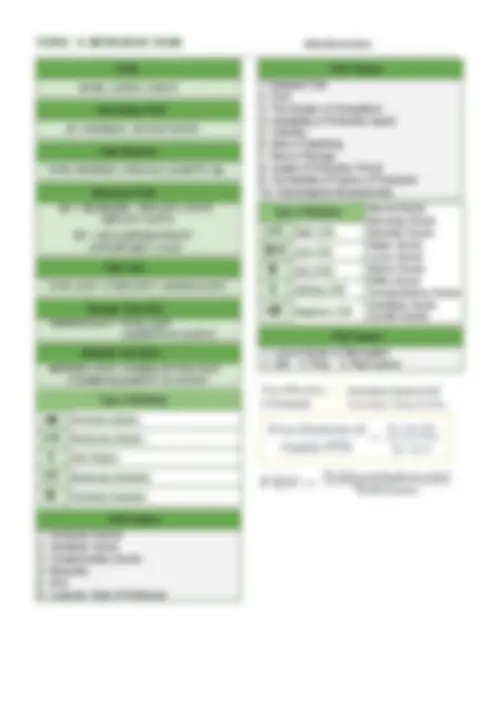


Study with the several resources on Docsity

Earn points by helping other students or get them with a premium plan


Prepare for your exams
Study with the several resources on Docsity

Earn points to download
Earn points by helping other students or get them with a premium plan
Community
Ask the community for help and clear up your study doubts
Discover the best universities in your country according to Docsity users
Free resources
Download our free guides on studying techniques, anxiety management strategies, and thesis advice from Docsity tutors
An introduction to price elasticity of demand and supply in the context of microeconomics. It explains how price elasticity affects total revenue for firms and how it is used to set prices or implement taxes. The document also covers different types of economic elasticity and their implications for producers and policymakers.
Typology: Lecture notes
1 / 29

This page cannot be seen from the preview
Don't miss anything!






















are things that people require to survive. If a human body does not have those things, the body cannot function, will die.
are things that a person would like to have but are not needed for survival.
means that human wants for goods, services, and resources exceed what is available. Scarcity is the inability to satisfy all our wants.
[Micro: Small scale; Localized]
act of selecting or making a decision when faced with two or more possibilities.
Microeconomics can be applied in a positive or normative sense.
describes and explains various economic phenomena. focuses on the value of economic fairness, or what the economy "should be" or "ought to be." is based on fact and can be proved. is based on value judgments seeks to understand behavior without making judgments about outcomes. analyzes outcomes of economic behavior, evaluates them as good or bad and sometimes prescribes a course of action. e.g. workers’ wages is $5 per hour. e.g. if workers’ wages should be more than $10 per hour. could help an investor see why Apple Inc. stock prices might fall if consumers buy fewer iPhones. could explain why a higher minimum wage might force The Wendy's Company to hire fewer workers.
Wealth of the Nations (1776) “The bible in economics ”
CAPITALISM - Private ownership in which the free market alone controls the production of goods&services. MARXISM - Examines the effect of capitalism on the Labor, productivity, and economic development and argues for a worker revolution to overturn capitalism in favor of communism. COMMUNISM - Karl Marx and Friedrich Engels and advocated the usage of resources of society, by society and for society. Advocating for a classless system in which the means of production are owned communally and private property is nonexistent or severely curtailed. Opposition to liberal democracy and capitalism. [Russia, China, North Korea]
Buyers attempt to maximize their gains from getting goods, and they do this by increasing their purchases of a good until what they gain from an extra unit is just balanced by what they have to give up to obtain it.
consumption of goods and services.
is the quantity of a product that producers are willing and able to provide at different market prices over a period of time. is the quantity of a product that producers are willing and able to provide at different market prices over a period of time.
An economy's gross domestic product (GDP), total amount a nation produces and sells. The total amount spent on domestic goods and services in an economy.
When we divide and subdivide the tasks involved with producing a good or service, workers and businesses can produce a greater quantity/output.
First, specialization
tasks often learn to produce more quickly and with higher quality.
advantage of economies of scale ,
cost of producing each individual unit declines as total output increases.
iPod or MP3 player, download the music, and listen. If you need a jacket—you just buy the jacket and wear it.
method rather than a doctrine, an apparatus of the mind, a technique of thinking, which helps its possessor to draw correct conclusions.”
TOPIC 3: THE CONCEPT OF SCARCITY MicroEconomics Scarcity of means to satisfy given ends is an almost ever present condition of human nature.
An estimate of income and expenditure for a set period of time.
All possible consumption combinations of goods that someone can afford, given the prices of goods, when all income is spent; the boundary of the opportunity set. Suppose Alphonso has $10 in spending money each week that he can allocate between bus tickets for getting to work and the burgers that he eats for lunch. Burgers cost $2 each, and bus tickets are 50 cents each. Each point on the budget constraint represents a combination of burgers and bus tickets whose total cost adds up to Alphonso’s budget of $10. The relative price of burgers & bus tickets determines the slope of the budget constraint. All along the budget set, giving up one burger means gaining four bus tickets. Any point outside the constraint is what? not affordable , because it would cost more money than Alphonso has in his budget. Point Quantity of Burgers ($2) Quantity of Bus Tickets ($0.50) A 5 0 B 4 4 C 3 8 D 2 12 E 1 16 F 0 20 This indicates all the combination of burgers and bus tickets Alphonso can afford, given the price of the two goods and his budget amount. The vertical axis in the figure shows burger purchases and the horizontal axis shows bus ticket purchases. If Alphonso spends all his money on burgers, he can afford five per week. ($10 per week/$2 per burger = 5 burgers per week.) However, if he does this, he will not be able to afford any bus tickets. Point A in the figure shows the choice (zero bus tickets and five burgers). Alternatively, if Alphonso spends all his money bus tickets, he can afford 20 per week. ($10 per week/$0.50 per bus ticket = 20 bus tickets per week.) Then, however, he will not be able to afford any burgers. Point F shows this alternative choice (20 bus tickets and zero burgers). If we connect all the points between A and F, we get Alphonso's budget constraint. The budget constraint clearly shows the tradeoff Alphonso faces in choosing between burgers and bus tickets.
A sacrifice that must be made to get a certain product or experience. A person gives up the opportunity to buy 'good B,' because they want to buy 'good A' instead.
The potential forgone profit from a missed opportunity—the result of choosing one alternative and forgoing another.
Economists use the term opportunity cost to indicate what one must give up to obtain what he or she desires. The idea behind opportunity cost is that the cost of one item is the lost opportunity to do or consume something else. In short, opportunity cost is the value of the next best alternative. For Alphonso, opportunity cost of a burger is the four bus tickets he would have to give up. He would decide whether or not to choose burger depending on whether the value of the burger exceeds the value of the forgone alternative—in this case, bus tickets. A fundamental principle of economics is that every choice has an opportunity cost. In short, opportunity cost is all around us and part of human existence.
An examination of the associated costs and potential benefits of specific business activities or financial decisions. The goal is to determine if the costs associated with the change in activity will result in a benefit that is sufficient enough to offset them.
For example, if a company has room in its budget for another employee and is considering hiring another person to work in a factory, a marginal analysis indicates that hiring that person provides a net marginal benefit. In some cases, realizing the opportunity cost can alter behavior. Imagine, for example, that you spend $8 on lunch every day at work. You may know perfectly well that bringing a lunch from home would cost only $3 a day, so the opportunity cost of buying lunch at the restaurant is $5 each day (that is, the $8 buying lunch costs minus the $3 your lunch from home would cost). Five dollars each day does not seem to be that much. However, if you project what that adds up to in a year—250 days a year × $5 per day equals $1,250, the cost, perhaps, of a decent vacation. If you describe the opportunity cost as “a nice vacation” instead of “$5 a day,” you might make different choices. Most choices involve marginal analysis. Examining the benefits and costs of choosing a little more or a little less of a good. People naturally compare costs and benefits, but often we look at total costs and total benefits, when the optimal choice necessitates comparing how costs and benefits change from one option to another. You might think of marginal analysis as “change analysis.” Marginal analysis is used throughout economics.
The concept of marginal utility is used by economists to determine how much of an item consumers are willing to purchase. Economists typically assume that the more of some good one consumes (for example, slices of pizza), the more utility one obtains. At the same time, the utility a person receives from consuming the first unit of a good is typically more than the utility received from consuming the fifth or the tenth unit of that same good. The general pattern that consumption of the first few units of any good tends to bring a higher level of utility to a person than consumption of later units is a common pattern. Economists refer to this pattern as the law of diminishing marginal utility. In simple terms, it means that the more of an item that you use or consume, the less satisfaction you get from each additional unit consumed or used.
Thus, the budget constraint framework assumes that sunk costs, which are costs that were incurred in the past and cannot be reversed or recovered , should not affect the current decision. For people and firms alike, dealing with sunk costs can be frustrating. It often means admitting an earlier error in judgment. Production Possibilities Frontier & Social Choices The Production Possibilities Frontier (PPF) is a graph that shows all the different combinations of output of two goods that can be produced using available resources and technology. Suppose a society desires two products, healthcare and education. This production possibilities frontier shows a trade-off between devoting social resources to healthcare and devoting them to education. At A all resources go to healthcare and at B, most go to healthcare. At D most resources go to education, and at F, all go to education. Society can choose any combination of the two goods on or inside the PPF. However, it does not have enough resources to produce outside the PPF. Most importantly, the production possibilities frontier clearly shows the tradeoff between healthcare and education. What’s the difference between a budget constraint and a PPF?
Maximize society's satisfaction & reduce scarcity?
The process to be fair in an economy that can range from the concept of taxation to welfare in the economy. It also means how the income and opportunity among people are evenly distributed. Equity is a "fair" distribution of income, or goods and services. (NOTE:) One problem with this definition is agreeing on what "fair" means. We know that equity is good for society. But we can't measure "fairness". This is a problem for economists. But we can DESCRIBE the actual distribution of income and I will also try to explain how equity does help society achieve the maximum satisfaction possible from its limited resources.
Refers to the state of having a job or being employed. If one has to employ someone, they must pay them. The person who hires people is known as an employer, and the person who is getting paid for providing the services is known as an employee. If we have full employment, we produce MORE. If we have unemployed resources, we produce LESS. This is why society's strive for full employment - it reduces scarcity and helps achieve the maximum satisfaction possible.
While every society must choose how much of each good or service it should produce, it does not need to produce every single good it consumes. Often how much of a good a country decides to produce depends on how expensive it is to produce it versus buying it from a different country. As we saw earlier, the curvature of a country’s PPF gives us information about the tradeoff between devoting resources to producing one good versus another. Countries tend to have different opportunity costs of producing a specific good, either because of different climates, geography, technology, or skills. Suppose two countries, the US and Brazil, need to decide how much they will produce of two crops: sugar cane and wheat. Due to its climatic conditions, Brazil can produce quite a bit of sugarcane per acre but not much wheat. Conversely, the U.S. can produce large amounts of wheat per acre, but not much sugar cane. Clearly, Brazil has a lower opportunity cost of producing sugar cane (in terms of wheat) than the U.S. The reverse is also true: the U.S. has a lower opportunity cost of producing wheat than Brazil. The U.S. PPF is flatter than the Brazil PPF implying that the opportunity cost of wheat in terms of sugar cane is lower in the U.S. than in Brazil. Conversely, the opportunity cost of sugar cane is lower in Brazil. The U.S. has comparative advantage in wheat and Brazil has comparative advantage in sugar cane. When a country can produce a good at a lower opportunity cost than another country, we say that this country has a comparative advantage in that good. Comparative advantage is not the same as absolute advantage, which is when a country can produce more of a good. Comparative advantage is not the same as absolute advantage, which is when a country can produce more of a good. In our example, Brazil has an absolute advantage in sugar cane and the U.S. has an absolute advantage in wheat. One can easily see this with a simple observation of the extreme production points in the PPFs of the two countries.
An economy's ability to produce a particular good or service at a lower opportunity cost than its trading partners. Comparative advantage is used to explain why companies, countries, or individuals can benefit from trade.
When a producer can provide a good or service in greater quantity for the same cost, or the same quantity at a lower cost, than its competitors.
We learned that every society faces the problem of scarcity, where limited resources conflict with unlimited needs and wants. The production possibilities curve illustrates the choices involved in this dilemma. Every economy faces two situations to be able to expand consumption of all goods. In the first case, a society may discover that it has been using its resources inefficiently, in which case by improving efficiency and producing on the l production possibilities frontier, it can have more of all goods (or atleast more of some and less of none). In the second case, as resources grow over a period of years (e.g., more labor and more capital), the economy grows. As it does, the production possibilities frontier for a society will tend to shift outward and society will be able to afford more of all goods.
Economists use the term demand to refer to the amount of some good or service consumers are willing and able to purchase at each price. Demand is fundamentally based on needs and wants —if you have no need or want for something, you won't buy it. While a consumer may be able to differentiate between a need and a want, from an economist’s perspective they are the same thing. Demand is also based on ability to pay. If you cannot pay for it, you have no effective demand. By this definition, a homeless person probably has no effective demand for shelter. PRICE - is what a buyer pays for a unit of the specific good or service. The total number of units that consumers would purchase at that price is called the quantity demanded. A rise in price of a good or service: almost always decreases the quantity demanded of that good or service. Conversely, a fall in price will increase the quantity demanded. Economists call this inverse relationship between price and quantity demanded by the law of demand. The law of demand assumes that all other variables that affect demand are held constant. A demand curve shows the relationship between price and quantity demanded, with quantity on the horizontal axis and the price per gallon on the vertical axis. The law of demand tells us that if more people want to buy something, given a limited supply, the price of that thing will be bid higher.
Supply is the amount of some good or service a producer is willing to supply at each price. PRICE - is what the producer receives for selling o unit of a good or service
Equilibrium is the state in which market supply and demand balance each other, and as a result prices become stable.
Notice that a change in the price of the product itself is not among the factors that shift the supply curve. Although a change in price of a good or service typically causes a change in quantity supplied or a movement along the supply curve for that specific good or service, it does not cause the supply curve itself to shift.
Equilibrium is the state of the market in which quantity demanded equals quantity supplied, thus stabilizing at the corresponding market price. Just like quantities demanded/supplied and price, equilibrium is subject to change.
Price ceilings prevent a price from rising above a certain level. When a price ceiling is set below the equilibrium price, quantity demanded will exceed quantity supplied, and excess demand or shortage will result. (rent control, meat, rice etc.)
Price floors prevent a price from falling below a certain level. Governments can enact laws, known as price controls, that control market pricing of goods and services. Price floors and price ceilings are two examples of price controls. Price floor is the lowest price that one can legally charge for some good or service. (minimum wage) The price ceiling causes a shortage in the market whereas the price floor causes a surplus in the market. Also transfer some consumer surplus to producers, or some producer surplus to consumers.
Refers to the total expenditure a firm incurs when utilizing economic resources to produce goods and services. Resources in the economy are scarce, and the allocation of them in an efficient manner is an essential step toward maximizing the firm's profit.
firm's revenue - total cost A firm might experience high revenues, if the cost of production is high, it will shrink the firm's profit.
Accounting costs are explicit costs , also referred to as hard costs , that include business necessities like payroll, production costs and marketing budgets. Businesses can easily track explicit costs because they include specific dollar/peso amounts. Accounting costs include anything a business spends and needs to be deducted from revenues in an accounting period. This means accounting costs are real money that leaves the bank each accounting period and includes everything you spend to market, manufacture & deliver products. You're required to determine accounting costs before you can calculate the accounting profit.
add all business expenses together (Manufacturing costs) + (Labor, salaries& taxes) + (Facility costs) + (Any additional expenses) = Accounting cost Manufacturing costs (Raw materials, utilities, maintenance), Labor, Salaries, Taxes, Rent or Mortgage
total accounting costs and add/subtract the monetary value of choosing an alternative option. Calculating an economic cost can help you determine which strategic option to pursue by comparing alternative costs against the accounting cost.
1. Calculate the accounting costs Using the formula for calculating accounting costs, determine the total amount of expenses you have. Consider all aspects of design, labor, manufacturing, production and distribution. Adding up all business expenses allows you to determine how much you're currently spending versus the amount of profit you're rendering. 2. Calculate the implicit costs Once you've calculated the explicit costs, you can calculate the implicit costs or the costs that an alternative option would yield. - Perhaps in an alternative option, you would only need three store managers versus six, affecting the total labor costs. - Alternatively, the business option you're considering may include entering a new market, in which case you can add up all potential business expenses and investments involved in this process. 3. Subtract implicit costs from explicit costs You can calculate the economic cost to find out which business option is the right choice. To calculate the economic cost, subtract the projected implicit costs from the pre-determined accounting cost. With this calculation, you may determine if an alternative business option could save the company money. This may help you decide whether to pursue an alternative business venture. - Economic costs are important for businesses because they help them determine long-term strategies and summarize the company's actual and potential values. - Business leaders can use economic costs to determine which markets to exit or enter and car give investors the confidence that the company has reconfirmed long-term value. - The benefit of economic cost analysis is finding the difference in cost among business options. Example, if a business has determined the accounting costs to open a storefront in a new market are $400,000, then accounting costs may allow them to consider: - What if they opened a storefront in a new market? - What if they leased their storefront to another business once they purchased it? - What if they invested the $400,000 into their original storefront rather than opening a new one? - Economic costs include accounting costs and implicit costs, which are hypothetical expenses used when making a business decision to forecast potential profit. This means that economic costs include both explicit and implicit costs. - Accountants and business leaders use economic costs when creating financial projections or determining the best strategic outcome, such as reallocating funds or using a more efficient mode of production.
In economic terms, total production costs refer to all the costs the firm incurs to employ inputs. On the other hand, Total revenue refers to the quantity of products sold by the firm multiplied by the price per unit of product.
A company's expense that varies as output varies.
TOTAL COST = FIXED COST + VARIABLE COST Total cost is the total economic cost of production.
The additional cost of producing one more unit of a good or service. Simply put, marginal cost is the change in the cost for production when you decide to produce one more unit of a good. Theory of Cost in Economics According to the theory of cost in economics, the costs a firm faces determine how much money they charge for a product or service and the amount supplied. The theory revolves around the idea that the costs that a firm faces significantly impact the firm's supply of goods and services and the price for which it sells its products. A firm's cost function adjusts itself according to several factors, such as the scale of the operation, the quantity of the output, the cost of production, and several other factors. Operate of Shut-down
Perfectly Elastic Any very small change in price results in a very large change in quantity demanded.
Relatively Elastic Small changes in price cause large changes in quantity demand.
Unit Elastic Any change in price is matched by an equal change in quantity
Relatively Inelastic Large changes in price cause small changes in quantity demanded
Perfectly Inelastic Quantity demanded does not change when price is changed